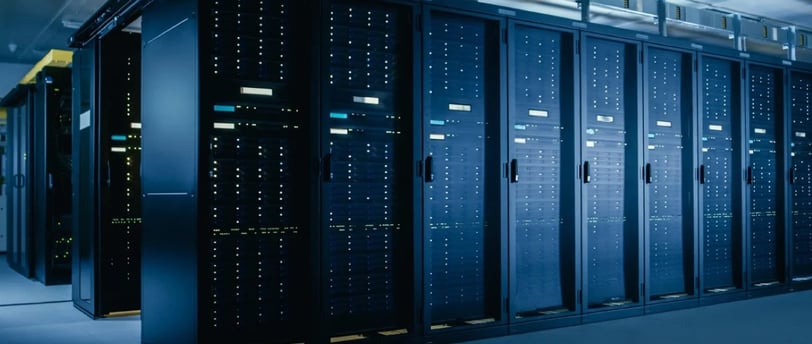Add your promotional text...
The Boom of India’s Data Centre Industry: A Digital Transformation on the Rise
Synopsis: India’s data centre capacity is poised to more than double by fiscal 2026-2027, driven by surging digitalisation, growing cloud storage needs, and the emergence of generative AI. Despite rising debt from capex, strong demand and stable cash flows are expected to maintain industry resilience, marking a pivotal era for data infrastructure growth.
INVESTMENT IDEAS
By Runjhun Tripathi
12/23/20243 min read


A Digital Revolution: India’s Data Centre Industry Set to Flourish
India's data centre industry is on the brink of unprecedented growth, with capacity projected to surge from the current levels to 2-2.3 GW by fiscal 2026-2027. According to a report by CRISIL Ratings, this expansion is fueled by an increasingly digital economy, robust investments in cloud storage, and the ever-growing demand for data from enterprises and consumers alike.
As the country embraces rapid digitalisation, the penetration of Generative Artificial Intelligence (GenAI) is emerging as a significant driver of demand. The industry’s growth trajectory underscores India’s pivotal role in the global digital transformation story.
Key Drivers of Demand
Post-Pandemic Digitalisation
The COVID-19 pandemic has accelerated the digital transformation of businesses, pushing enterprises to adopt cloud platforms and digital-first strategies. This trend continues to drive the need for computing and storage infrastructure.Surge in Internet Usage
Enhanced access to high-speed data has catalysed the rise of online activities, including social media engagement, over-the-top (OTT) content consumption, and digital payments. Mobile data traffic has grown at a compound annual growth rate (CAGR) of 25% over the last five years, with usage expected to climb from 24 GB per month in fiscal 2024 to 33-35 GB by fiscal 2026.Generative AI
The rapid evolution of GenAI technologies demands higher computational power and ultra-low latency. This emerging technology further propels the need for advanced data centre infrastructure, positioning India as a hub for digital innovation.
Capital Investment and Financial Stability
Meeting the soaring demand for data centres necessitates significant investment. CRISIL Ratings estimates that the industry will require Rs 55,000-65,000 crore over the next three years, primarily for land acquisition, building development, power equipment, and cooling solutions.
The report highlights that incremental capital expenditure (capex) will be predominantly debt-funded, leading to a moderate rise in debt levels. However, the growing demand ensures minimal offtake risks, enabling stable cash flows and steady credit profiles for industry players.
Capacity Expansion and Utilisation
The industry's growth is driven by expansion plans of existing players and the entry of new participants. Hyperscalers—large-scale cloud service providers with substantial capacity needs—play a pivotal role in shaping the market.
Balancing Act: Utilisation and Pricing
Hyperscalers often secure competitive pricing, typically 10-20% lower than other customers, owing to their high bargaining power. This dynamic underscores the importance of achieving a balance between capacity ramp-up and pricing strategies to ensure optimal returns on investments.
According to CRISIL Ratings senior director Manish Gupta, infrastructure development typically accounts for 25-30% of overall capex. Despite utilisation risks, the strong demand environment is expected to enable capacity utilisation rates of 80-90% within a year or two of project completion.
The Road Ahead
India’s data centre industry is uniquely positioned to thrive amid the ongoing digital revolution. Key trends and projections highlight the transformative potential of this sector:
Market Maturity: With operational players representing 85% of market share, the industry is entering a phase of consolidation and maturity.
Demand Outpacing Supply: While capacity additions may lag behind demand growth, this ensures low offtake risks and a robust utilisation outlook.
Technological Advancements: The rise of GenAI and its computational demands are set to shape the next generation of data centres, with advanced infrastructure becoming a necessity.
Long-Term Viability: Healthy cash flows and strong credit profiles underscore the resilience of the industry, even amid rising debt levels.
In conclusion, India’s data centre industry is entering a transformative era, with the convergence of digitalisation, cloud adoption, and cutting-edge technologies like GenAI driving unprecedented demand. While challenges such as balancing capacity utilisation and pricing remain, the industry is well-positioned to navigate these complexities and deliver strong returns.
For stakeholders, this marks an opportune moment to invest in the backbone of India’s digital economy. As capacity expands and infrastructure evolves, data centres will play a crucial role in shaping the nation’s digital future.
